No human-made object is further out in space than NASA’s Voyager I, which is currently near the edge of our Solar System, more than 33 lighthours – the distance traveled by light in a vacuum in one hour – roundtrip light time from the sun.
Its twin, Voyager II, is also headed toward the tip of the Solar System, but in another direction and it hasn’t journeyed as far.
The U.S. space agency announced this month that Voyager I entered a new region between our Solar System and interstellar space – areas of outer space within a galaxy, but not occupied by stars or their planetary systems.
Recent data from Voyager I suggests this region is a kind of “cosmic purgatory.”
In this region, solar wind from our sun has calmed, our Solar System’s magnetic field has intensified and high-energy particles from inside of our Solar System appear to be leaking out into interstellar space.
The finding highlights the fact that the Voyager spacecraft continue to send valuable information back to Earth more than 34 years since they were launched.
Voyager’s original mission, consisting of two unmanned spacecraft called Voyager I and II, was to explore our Solar System’s great outer planets – Jupiter, Saturn, Uranus and Neptune – as well as their moons and the distinctive system of rings and magnetic fields those planets possess.
Voyager II was launched first, on Aug. 20, 1977, from Cape Canaveral, Florida aboard a Titan-Centaur rocket. Its twin, Voyager I, launched 16 days later, on Sept. 5.

Jupiter and two moons by Voyager Mission (Photo: NASA/JPL)
Dr. Edward Stone, the Voyager Mission’s project scientist since 1972, says 1977 was a perfect time to launch an interplanetary probe because, every 176 years, the giant outer planets are lined up so that one spacecraft can fly by all four.
Each of the two Voyager spacecraft, while packed with sophisticated equipment, also carried a time capsule of sorts, intended to communicate with possible extraterrestrials they might encounter on its journey. The material, on a 12-inch, gold-plated disk, contains a variety of sounds and images selected to portray the diversity of life and culture on Earth.
Voyager I made it to within 206,800 kilometers of the cloud tops of Jupiter on March 5, 1979, with Voyager 2 following on July 9, 1979. Among the discoveries made was that Jupiter’s “Great Red Spot,” which had been seen by Earth’s telescopes, was a complex storm that moved in a counterclockwise direction.
The next stop of Voyager’s mission was Saturn.
Voyager II got to make its flyby first, on Aug. 25, 1981, coming within 41,000 kilometers of the planet’s cloud tops. Voyager I did so about two and a half months later on Nov. 12, 1981.
Voyager encounters with the planet prompted scientists to conclude that Saturn’s famous rings are might be made from the shattered remains of larger moons. Voyager I was also set on a path to get a good look at Saturn’s giant moon Titan .
However, this forced Voyager I to end its planetary science mission. The spacecraft, however, continued to feed valuable data back to Earth and its mission was later changed by NASA to be called the Voyager Interstellar Mission (VIM).
That left Voyager II on its own to explore Uranus and Neptune. The spacecraft made its closest encounter with Uranus on Jan. 24, 1986, coming within 81,500 kilometers of the planet’s cloud tops.
Compared with the other planets of the solar system, Uranus is oriented a bit differently because it’s tipped on its side. According to scientists, this unique feature was believed to have occurred after Uranus collided with another planet-sized body early in the history of the Solar System.
Voyager II found that the Uranus had a magnetic field comparable to Earth’s, which was affected by the planet’s sideways position.
On Aug. 25, 1989, Voyager II got close to Neptune, flying within 5,000 kilometers of the planet. Voyager found the planet was very active and revealed several large, dark spots that seemed to be similar to those found on Jupiter. Scientists named the biggest spot, the “Great Dark Spot,” which was found to be as big as Earth.
After its encounter with Neptune and its moons, Voyager II joined its twin spacecraft in its journey to the edge of the Solar System.
However, before NASA turned any Voyager cameras off, the late Carl Sagan requested the lens be turned around to take a final look back at the planets.
On Feb. 14, 1990, Voyager I snapped 60 images of the sun and Venus, Earth, Jupiter, Saturn, Uranus, and Neptune. The images were formed into a mosaic which became known as a “Family Portrait”.
Voyager I’s photos of Earth, from a distance of about 6 billion kilometers, made our planet appear as a tiny blue dot in the great vastness of space.
This photo, called the “Pale Blue Dot,” inspired Sagan to use it as the main title of his 1994 book, “Pale Blue Dot: A Vision of the Human Future in Space,” in which he wrote about his thoughts on a deeper meaning of the photograph.
Today, according to Dr. Stone, Voyager I and II continue to transmit data – which is picked up by NASA’s Deep Space Network– 24 hours a day.
Scientists monitor the signals sent by each spacecraft for about 10 hours daily and are learning about the magnetic field from the sun that has been carried out into the further recesses of our Solar System.
The strength and direction of this magnetic field, and the high energy particles within our Solar System’s heliosphere as well as the speed of the solar wind, are frequently measured. As the Voyager spacecraft continue their journey into interstellar space, scientists have noticed that the speed of the solar wind is slowing down.
According to NASA, the twin spacecraft could enter into interstellar space before 2020 but, once they do, going beyond the heliopause, there will no longer be enough electrical energy to continue to power Voyagers’ instruments.
What happens after that is anyone’s guess.
Dr. Edward Stone joins us this weekend on the radio edition of “Science World.” He’ll tell us about the Voyager program and its legacy. Tune in (see right column for scheduled times) or check out the interview below.
[audio://blogs.voanews.com/science-world/files/2011/12/One-On-One-Dr.-Edward-Stone-Voyager.mp3|titles=One On One – Dr. Edward Stone – Voyager]Be sure to check out our gallery of photos taken by the Voyager spacecraft below.
Other stories we cover on the “Science World” radio program this week include:
- AIDS study named “2011 Breakthrough of the Year“
- Geophysicist probes the secrets of the ocean
- NASA’s GRAIL mission to orbit and map moon
- Damaged brain cells might stop weight control
Photos taken by the Voyager Program – Click to enlarge (Photos: NASA/JPL-Caltech)







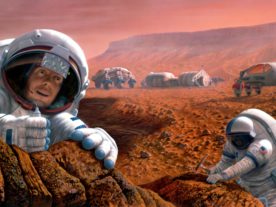







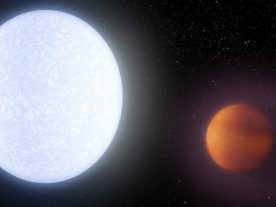
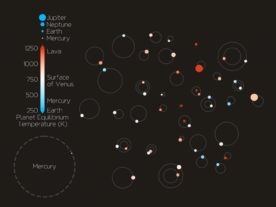



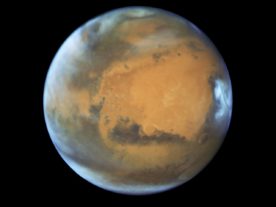



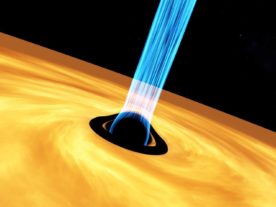

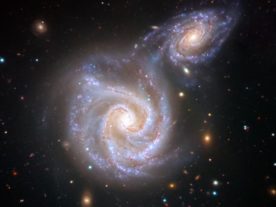
As a 60-year-old and life-long huge fan of “All Things space,” I continue to be excited about the twin Voyagers — they’re like the “grandparents” of the twin extraordinary Martian rovers. I well remember the excitement when they were launched way back then, excitement despite competition from the manned space programs recent Apollo missions and the upcoming space shuttle launches.
It is downright astonishing we can still receive transmissions from them, considering that their signals are so incredibly weak. What did I read a few years ago? Way less than the power of a standard 60-watt light bulb? Something like that.
Voyagers der Wunderbar!
Well done, NASA.